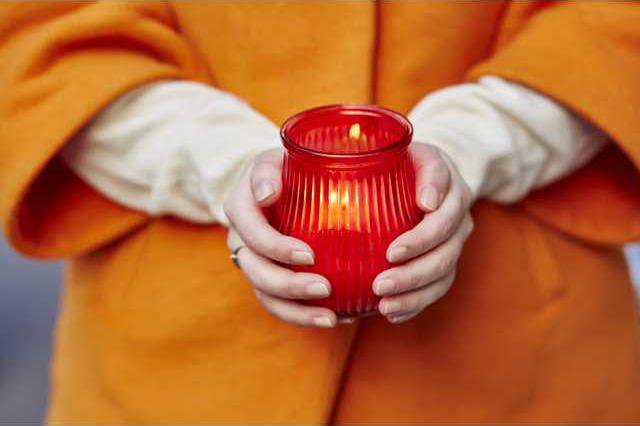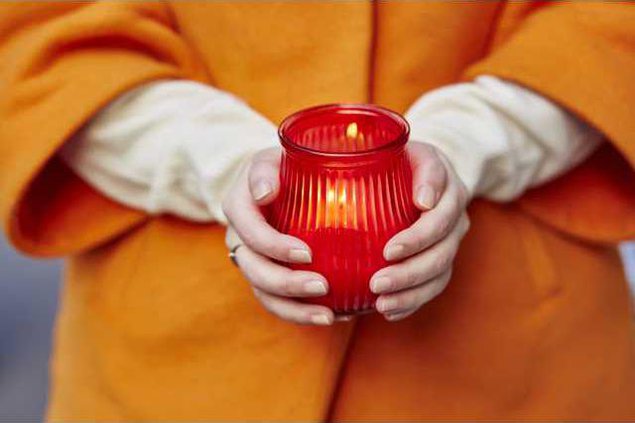Meghan Budden was washing her baby in her New Jersey apartment and discovered something alarming. When she wiped her baby's nose, she discovered small black spots in the tissue.
Later as she was feeding him, again she noticed the same black spots in his nose.
What was the cause?
Budden, intrigued, looked around for a possible source of the black spots. She saw two scented candles on the table that she had lit the night before. But candles couldnt be related to her babys spots, she thought. To be sure, she took a look at their instructions.
On the label, a warning was written in small letters: do not burn for more than three hours in a row. Budden had let the candles burn for over six hours.
She discovered the candles began producing a dangerous substance: soot.
According to the site, Cashins, "Breathing the tiny particles can cause coronary heart disease, asthma, bronchitis, and many other respiratory illnesses. The site also reports that exposure to soot particles causes about 20,000 deaths annually in the US alone. The data also shows that soot causes nearly 300,000 asthma attacks a year and 2 million working days are lost due to respiratory problems.
If Meghan continued to use the candles as usual, she would endanger both her child's life and her own. Experts recommend regularly cutting candle wicks and burning them for only a few hours.
Dangers of using candles
Most of us are careful with candles to avoid burns or accidental fires, but are we aware of the possible danger they emit into the air?
A study in South Carolina found that candles can emit substances as toxic and harmful as cigarettes. This is because paraffin (a raw material used to make candles), is a derivative of an oil that, when burned, releases two toxic substances: toluene and benzene. These substances can cause asthma, eczema, skin problems and even cancer.
According to the Daily News, the biggest issue occurs when candles are continuously burning in poorly ventilated environments, such as Catholic church houses. A Dutch study found that churches containing burning candles transform into cancer-causing environments.
Scented candles
Scented candles especially pose a problem when not used in moderation. The aroma added to the candles also emits substances called phthalates, which can cause fertility problems, disrupt the endocrine system and also cause cancer. Burning candles simultaneously or for long periods of time exposes the body to formaldehyde and acetaldehyde which are also carcinogenic.
Keep your familys safety in mind next time you light a candle. Blowing out the flame within three hours is a sure way to help your family avoid breathing in soot and other harmful toxins.
Later as she was feeding him, again she noticed the same black spots in his nose.
What was the cause?
Budden, intrigued, looked around for a possible source of the black spots. She saw two scented candles on the table that she had lit the night before. But candles couldnt be related to her babys spots, she thought. To be sure, she took a look at their instructions.
On the label, a warning was written in small letters: do not burn for more than three hours in a row. Budden had let the candles burn for over six hours.
She discovered the candles began producing a dangerous substance: soot.
According to the site, Cashins, "Breathing the tiny particles can cause coronary heart disease, asthma, bronchitis, and many other respiratory illnesses. The site also reports that exposure to soot particles causes about 20,000 deaths annually in the US alone. The data also shows that soot causes nearly 300,000 asthma attacks a year and 2 million working days are lost due to respiratory problems.
If Meghan continued to use the candles as usual, she would endanger both her child's life and her own. Experts recommend regularly cutting candle wicks and burning them for only a few hours.
Dangers of using candles
Most of us are careful with candles to avoid burns or accidental fires, but are we aware of the possible danger they emit into the air?
A study in South Carolina found that candles can emit substances as toxic and harmful as cigarettes. This is because paraffin (a raw material used to make candles), is a derivative of an oil that, when burned, releases two toxic substances: toluene and benzene. These substances can cause asthma, eczema, skin problems and even cancer.
According to the Daily News, the biggest issue occurs when candles are continuously burning in poorly ventilated environments, such as Catholic church houses. A Dutch study found that churches containing burning candles transform into cancer-causing environments.
Scented candles
Scented candles especially pose a problem when not used in moderation. The aroma added to the candles also emits substances called phthalates, which can cause fertility problems, disrupt the endocrine system and also cause cancer. Burning candles simultaneously or for long periods of time exposes the body to formaldehyde and acetaldehyde which are also carcinogenic.
Keep your familys safety in mind next time you light a candle. Blowing out the flame within three hours is a sure way to help your family avoid breathing in soot and other harmful toxins.





